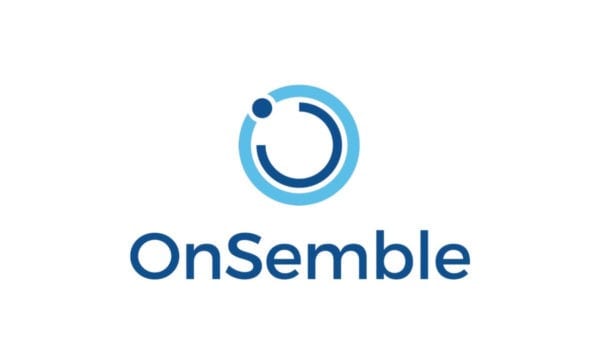The watercooler and the conference room are well-known landmarks in the geography of a workspace. One is a place for socializing—the glue that sticks a team together—and the other, ground zero for planning and executing your business goals.
An intranet platform is equally important for the modern small business, functioning a bit like a conference room and a watercooler: a place to meet as well as generate and share ideas and information. And, most importantly, get work done.
BP’s Picks for Best Intranet Platform for Small Businesses
- Best Overall: Happeo
- Best for Both Internet and Intranet: Google Workspace
- Best for Collaboration: HCL Connections
- Best for Remote Teams: OnSemble
- Best All-Inclusive: Microsoft Office 365
It could be said, then, that an intranet is a virtual space, or cloud-based computer network, catering to the unique needs of organization with tools for communication, collaboration, organization, and more.
It’s easy to get recommendations for intranet platforms online from a variety of sources, but Business Pundit took it one step further: We asked small-business owners, chief technology officers, and IT professionals their opinion on the best intranet platform for small business. That way you know what you’re reading here is based on real-world experience.
There are many intranet platforms for small businesses to choose from. But which one is the best? Here’s what we found out.
How to Choose an Intranet Platform for Your Small Business
This article not only tells you the best intranet platforms for small business, it gives small-business owners like you the information they need to make an informed decision, all on their own. All the advice and all the product reviews in the world won’t do you much good if the intranet platform isn’t right for you and your small business.
To this end, Business Pundit not only asked business owners which business intranet platform they liked, we also asked how each organization reached their conclusion.
Keep reading to find out which intranet platform Alex Thompson, director of Festoon House, an Australian business providing outdoor lighting fixtures and design services, liked for his small business. But for now, here’s what Thompson says he looked for when he was just beginning his search:
Integration. An intranet’s integration with other tools is a crucial factor in determining its long-term use, Thompson says. “Some intranet solutions have their own proprietary platforms, but this might not be a good idea when your business grows, and as needs change through the years.” To help address this issue, Thompson urges small-business owners to choose an intranet platform that supports well-adopted tools, such as GSuite or Azure.
Ease of use. The next point Thompson brings up is when shopping for a small-business intranet platform to remember that, whatever intranet platform a small-business owner chooses, it should make life easier, not harder. For example, “The interface of the platform must be intuitive and user-friendly,” Thompson says, and while there may be some new tools and functions introduced into a company’s workflow, “navigation and operation must be easy to figure out,” Thompson continues.
Vendor values. The last piece of advice Thompson has for those just beginning their search for an intranet platform is to assess the vendor, making sure its values and principles are consistent with your own company’s values and principles. “You’re building a relationship here,” Thompson says, “and you have to think about how your business will be perceived when associated with the vendor,” he says.
Personality and company culture are crucial for businesses, so make sure whatever platform you choose reflects positively on your businesses brand, identity, and culture, Thompson continues.
To these ends, Suzie Robinson from ClearBox Consulting, an intranet consulting service based in the UK, and David Shell of Tradesmen Costs, suggest a three-point plan when shopping for an intranet platform:
First: Create an intranet strategy that’s in-line with the values and strategy of your own business.
When developing an intranet strategy, Shell says an organization should focus on its goals. “It’s easy to forget your objectives when implementing your intranet solution,” Shell adds. Remember why you are shopping for an intranet platform in the first place and make sure that the chosen intranet program suits those purposes.
He also says that, early in the process, it’s useful to consider how an intranet service might improve social aspects of the company as well as how the platform might bolster a culture of collaboration.
Second: Identify the functional and nonfunctional requirements you’ll need from the platform.
When evaluating the functional and nonfunctional requirements of the intranet platform, it’s best to get the whole team involved, Shell continues. “Business intranet software has plenty of potential for connecting and creating solutions,” Shell adds, but he cautions that no matter what program or platform is selected, the team may be nervous at first. With a little push and encouragement, however, an intranet can be a powerful company-wide tool, but “collaboration is out of your reach if one or two of your employees are unwilling to cooperate,” Shell says.
Third: Explore the market.
Don’t just settle for the first intranet platform that catches your attention, says Robinson from Clearbox Consulting. When exploring what’s out there, keep the following in mind:
Cost. Robinson says to keep in mind both the cost per license as well as the features the platform offers for the price. “Some of the top-end vendors might be amazing, but you’ll pay a lot for their features,” she says, adding that something cheaper may match your requirements just as well, or perhaps even better. “Also, vendors offer discounts for all sorts of things, like seasonal or volunteer staff” who may need temporary access to the platform, she says, and with certain systems that access can sometimes cost money. For these reasons and more, be sure to talk through your situation thoroughly with the vendor before making your purchase.
What do you need it to do? Robinson further emphasizes that a small-business owner shopping for an intranet platform should keep their needs and requirements in mind so they don’t end up blinded by all the shiny features. “You want something your colleagues will love, so something sprawling and feature-rich might be overwhelming rather than helpful,” she says.
Is an intranet even right for your business? Robinson also says there are other digital workplace tools like Microsoft Teams and Workplace from Facebook, and a host of other employee mobile apps, that may suit a business’s needs just as well as an intranet. For example, a business could simply use SharePoint from Office 365 to store documents, she says, and then, “explore a different tool that isn’t a traditional intranet,” she says. “What matters is that it matches your needs.”
Echoing that, Shell from Tradesmen Costs says to break down a big decision like purchasing an intranet platform into small user-friendly steps, and don’t expect results right away.
“Take on hurdles one at a time,” Shell says. Be smart with your approach, tread slowly, and ease everyone into the learning curve associated with every aspect of the intranet solution. “You should never ask too much from your team or they’ll end up burning out,” Shell says.
Keep reading for a closer look at why each intranet platform ended up where it did in this ranking.
Best Overall: Happeo

With an overwhelming response from small-business owners, chief technology officers, and IT professionals, Happeo came in first in this ranking of the best small-business intranet platforms.
What Alex Thompson from Festoon House likes about the platform is its ability to integrate with GSuite.
Using Happeo, Thompson says, “makes project management and collaboration much easier.” In addition, Happeo streamlines information sharing as well as documenting processes and filing.
Thompson also likes how important company information is easily accessible to authorized staff and that Happeo is very mobile friendly. “Our team finds it very easy to use on the go,” he says.
Jason Hughes, CEO and co-founder of Vegan Liftz also chose Happeo for his company, an online resource for leading a vegan lifestyle.
How Hughes’ team engages in the field was a high priority for his company, and in this regard, Happeo excels.”Happeo keeps our tasks accurately monitored,” he tells Business Pundit in an email. It also helps keep employees engaged and productive while supporting a strong communication structure, he says.
Furthermore, Happeo is noted for accessibility. “It was awarded for its user-friendliness, workplace integrations, and ease of implementation,” Hughes adds. Being accessible and user-friendly is the foundation of a good intranet solution, Hughes continues.
Technical Specifications
Among the many technical specifications that users appreciate about Happeo, its easy integration with Gsuite ranks near the top.
This integration allows users to manage content, easily access employee engagement analytics, and manage permissions, among many other benefits. Francesca Nicasio’s company Payment Depot uses Happeo. The platform effectively combines intranet, collaborative features, and social networking into one platform, she says.
“It also allows you to customize appearance and language to fit your brand and company culture,” Nicasio continues.
There are three primary parts of Happeo, according to Nicasio: pages, channels, and people. Intranet pages can be managed like building blocks using a drag-and-drop interface, smart sections, and preconfigured layouts.
“You can embed or link to documents, forms, files, spreadsheets, calendars, and social media feeds, into pages,” Nicasio explains. Happeo uses channels as a social tool, providing fast, direct communication, while the “People” feature functions like a company directory.
Employees can be searched based on language, position within the organization, or specialization, Nicasio adds. The platform also provides a robust mobile application, with support available via phone, email, and online.
“If you’re already using GSuite, Happeo will take it to the next level,” Nicasio says.
What Makes it the Best?
Other features users appreciate about Happeo include the ability to manage permissions on an opt-in rather than an opt-out basis, which isn’t the case with all intranet platforms. In addition, all the elements within Happeo are easy and intuitive to set up, and users quickly become experts, according to feedback.
Happeo also allows a company to seamlessly integrate its own branding and aesthetic into the look and feel of the platform. According to reports, senior teams in particular like how easy the platform makes internal communication, saving time and money spent previously on other forms of inter and intra-departmental communication. It’s also strong for communication and collaboration between team members at remote locations, cutting down the need for phone calls and emails.
Otherwise, technical and sales teams like the pages function, using it to create technical and business Wiki pages which can be easily accessed by anyone from within the company. This is particularly helpful when on-boarding new team members, we learned.
Also notable is Happeo’s ability to put all sorts of information in one place rather than spreading it around over multiple locations. Users can also create highly detailed profiles, helping track who’s involved in a particular project or who within the team might be a good resource to address a specific issue or answer a specific question.
Furthermore, through simple and effective file-sharing functionality, Happeo makes collaboration easy with those outside of an organization, including clients, customers, and contractors. There’s also automatic data collection, and Happeo’s support team is very responsive, according to user reviews.
What Could Be Better?
Some features users would like to see improved about the Happeo experience include an optimization allowing for organizational outcomes to be prioritized. In addition, the page editor is limited when compared to other products, especially Google page site editor.
Users also suggested other tweaks to the system that range from the ability to have duplicate sections on a single page to the freedom to add buttons with text and icons. The page list could also be expanded, according to one report. Also lacking is the freedom to move a sub-page without before moving the master page.
Additional notes from customer feedback calls the migration of content from other platforms time consuming, especially Confluence, another common intranet platform.
It has also proven too difficult for some teams to get completely on board with page creation. Some team members call the process time consuming. There is adequate documentation to help them along, we learned, so most pick up the process easily.
Best for Both Internet and Intranet: Google Workspace

For both an intra and internet solution, the overwhelming majority of small-business owners and IT experts recommend Google Workspace, (formerly known as G Suite). Karthik Subramanian is senior content manager at Picmaker, handling content strategy and product marketing for the company.
“G Suite is our comprehensive solution for all our intranet and internet needs,” he says. External communication with customers and clients can be handled through Gmail, attaching files straight from Google Drive. “This way,” Subramanian says, “we have our internal and external communication under one roof.”
In addition, the combination of communication and file storage available through Google Workspace saves both time and money. With Google Workspace “We don’t have to buy another piece of clunky software and implement it,” Subramanian continues, and it all exists on the cloud. “All documents are on the cloud, so we can retrieve them whenever we want them,” Subramanian adds. That means instead of buying individual laptops and a bunch of external storage solutions, Subramanian continues, “everything is available at the click of a button,” including apps like Hangouts, Meet, Photos, Jamboard, and YouTube.
Also, there’s very little learning curve with Google Workspace. “Google has been around for more than 20 years,” and that means most internal audiences already know how to use it, Subramanian points out, eliminating the need for a separate crash course, he says.
Technical Specifications
Working well as both a standalone solution and as an internal ecosystem, according to user reviews, Google Workspace offers chat, docs, drive, meet, calendar, and forms.
All files are stored in the cloud and easily accessible at any point, including text documents, spreadsheets, drawings, or presentations. In addition, Workspace integrates well with other platforms, with a great spam filter available through Gmail as well as the ability to filter emails into different inboxes to keep things organized.
Scheduling is also made easy with the calendar function. And just because it’s Gmail doesn’t mean you can’t have your own corporate email domain, which is nice for branding. Using Workspace, internal communication is facilitated through chat, whether that’s in-office communication or across teams at remote locations. And maybe best of all, there’s only one password required for access, and everything is backed up automatically along the way — so no nasty surprises with lost data.
The admin console is also very easy to use in Workspace, according to reports. When changes are made to a document, it can be easily shared among members of the team. Another nice feature is that more than one person can work on a document at the same time, and a simple account provides 30 gigabytes of storage, a professional email address featuring the name of a private company, and all the compatible plug-ins available through the Suite Marketplace offered by Google.
What Makes it the Best?
Google Workspace also facilitates meetings and events conducted online, and that’s a definite bonus according to multiple sources of user feedback. Business Pundit also appreciates users reports that state the video conferencing is easy to use with very little latency. Privacy and security are also easy to set up.
Those who’ve tried the system for their business needs say it helps keep teams on the same page, especially teams working remotely from home or across multiple locations.
Additional positive reports from those who’ve chosen Google Workspace mention there’s no need to build an address book in order to stay connected to a team or with clients and customers — all contacts are available with the click of a button.
Adding new members is a breeze with Workspace, users say, and emails can be forwarded from other intranet platforms, making migration even easier. Problems small businesses solved by choosing Google Workspace include the ability to manage business accounts from the familiar Gmail interface, and that users can set it up on their personal device with separate profiles for work and personal business. And as employees turnover, all business data can be deleted without touching any personal information.
Furthermore, archives can be shared securely among team members with a simple upload, and all the apps are accessible from the dashboard. Overall, users call Workspace well organized and say that it’s easy to navigate.
What Could Be Better?
No intranet system is without its flaws, however, and a few Google Workspace features users would like to see improved include issues around inflexibility when mixing license types. And while easy to use in many regards, product feedback calls the chat a little “clunky” at times.
Many users also wish that video conferencing could be integrated into the chat rather than through a separate link. In addition, many who’ve tried Google Workspace prefer Microsoft’s docs, sheets, and slides, and say the platform is best suited for businesses in their early stages of development.
While generally user-friendly, importing from other platforms was not completely accurate for some Workspace users, particularly Excel documents with macros (Excel’s system for automating many repetitive tasks).
Once imported, the macros tend to break, according to reports, and while Workspace does have it’s mini programming language, it’s not nearly as robust as VBA (or visual basic application) with office integrated, we learned. VBA is Microsoft’s event-driven programming language, and though it’s considered legacy, it’s still built into many Office applications.
Having an already existing Gmail account can sometimes make migration a bit tricky, some users say, but it can be fixed with an incognito browser window, helping keep things separate.
Additional feedback says Google user support can be slow, and there are less expensive intranet platforms out there, despite all the positive aspects of Workspace.
Best for Collaboration: HCL Connections

The modern workplace can be all about collaboration, sometimes across multiple locations across the globe.
To help facilitate this collaboration, we chose HCL connections, an IBM product, as the best intranet platform to serve this purpose. A range of user feedback from database experts and small-business professionals supports our decision.
One positive report came from Joseph Ferdinando, founder of Building Security Services, an industry-leading security company that specializes in security personnel, systems, and equipment.
Ferdinando’s company chose HCL Connections for its intranet and is pleased with how well the platform keeps employees focused and on task. HCL Connection helps create a personalized, well-designed digital office with role-based content and tools centered on achieving business goals and objectives.
Ferdinando says HCL Connections also offers a cohesive framework based on transparency as well as engagement, application interoperability, and knowledge transfer.
What also makes Connections successful, he continues, is the focus on how employees actually do their work and not just on the bells and whistles of the platform and associated apps. Integration is pretty seamless with any applications you may already be using, he says, and this goes a long way toward breaking down work silos, putting people and collaboration at the center of the work process.
Strong interaction among teams is also facilitated using the Connections platform, with ample learning opportunities for leadership but also for management and employees, he says.
There are also built-in features that allow for two-way communication, giving employees a voice, and managers real insight. With Connections, businesses can count on enterprise-grade security and control, whether they choose to host their intranet in the cloud or on the premises, Ferdinando explains.
Technical Specifications
Creating user profiles with HCL Connections is easy, according to user reports. This not only helps team members connect, it also presents a clear picture of how different individuals fit within an organization.
Individual performance can also be tracked through the platform, and virtual meeting programming is reliable and easy to use, according to reports. Security features are also excellent, especially when sharing important documents. Overall, it’s a great management tool for real-time communication. Users say that chatting is effective, coupled with strong document-editing capabilities.
Additional strengths mentioned by users include the email features working in a browser instead of client-installed software. Privileges can also be established for certain documents, making them viewable by only certain team members and clients. Otherwise, it’s a service-oriented architecture, according to one review, and the homepage features customizable widgets. There’s also a convenient, easy-to-access organizational directory.
In addition, users can blog, build wikis, and create forums with Connections. Many user reviews also mention the information bookmarks and web communities, and the web 2.0 social networking features. There are also easily accessible metrics with which managers can evaluate the effectiveness of these tools. Along those same lines, the task management tool tracks which team members are on which projects, and the survey forms are a great way to collect user feedback and evaluate progress.
What Makes it the Best?
One organization chose Connections for its sales and digital marketing team, and its integration with social networks helped reach a whole new class of customers, boosting sales.
Used throughout an organization, many mention how well the tool keeps everyone informed and up-to-date. Connections also allows for content to be searched and sorted using tags. Connections can also embed and make viewable many different kinds of content, and the permission function helps keep all that content secure.
The newsfeed is also mentioned by many users, which can be filtered to show information and data of interest to the user, cutting down on company-wide emails.
Also available are activity and to-do list functions, helping to keep meeting notes, agendas, and tasks all in one place. The desktop plug-in means users can work within Microsoft Word and Excel but save to the cloud, that way other users and clients can view the document even if they don’t have Word installed on their computer.
As for documents, document “versioning,” available through Connections, helps keep all the different versions organized. This cuts down on multiple different copies of a document floating around within an organization, which can create confusion and increase the likelihood of errors.
What Could Be Better?
A few examples of things that Connections users wish would improve involve clunky formatting within the document editing tool, but the desktop plug-in helps to address this issue.
There are also reports that specific documents and links cannot be added to the homepage with additional relevant links. Instead, a separate community must be created to disseminate the information. This is an additional step in the process that many users would like to see eliminated. Also, users say it could be easier to make and nest more sub-communities and sub-Wikis. But as it stands now, only one sub or child community or sub-Wiki can be created.
Installation of the software could also be streamlined, according to one report. While this has improved as versions have been updated, add-on packages still tend to create issues, users say, and the programming language called CSS used in the platform is too complicated for some new users. In addition, the rights structure could be more granular, we learned, and dealing with end data after a user leaves an organization could be simplified. There’s also no way to reassign data ownership when someone else assumes the role.
Users accustomed to working in Apple or Microsoft environments also find acclimating to the interface a bit difficult, and there’s no security available for file folders. The data import and export tools could also be improved, according to one report.
Best for Remote Teams: OnSemble

What if your business or organization has no centralized office at all? For teams working remotely, the best intranet platform comes from OnSemble. David Shell, of Tradesmen Costs, says managing remote teams isn’t always easy, but with the right tools, like OnSemble, businesses structured this way can not only function, they can grow.
As a digital workplace, OnSemble keeps your employees connected and helps everyone feel valued. Using the program will keep your team committed and acting as one while working across remote locations, and, best of all, you don’t have to be an IT expert to use OnSemble, Shell says. That’s because many functions performed by the platform are as easy as drag and drop. “It will transform how you connect, collaborate, and communicate,” Shell says.
Otherwise, OnSemble functions as a central communication hub for all employees within an organization but especially for employees working at different locations. The platform is an effective place to provide feedback on projects, review all forms of corporate, inter- and intra-department communications, and provide recognition for team members who are going above and beyond.
It’s also a great resource for upper management and executive leadership to engage with a team, according to reports.
Technical Specifications
OnSemble is totally customizable and can look completely different between portals, depending on the needs of the team and the preferences of the user.
Business Pundit also learned that OnSemble offers excellent training, and there is no one cookie-cutter solution. Instead, tools are provided so that the platform can be built to the specifications of different organizations.
The portal is versatile and capable enough to house all documents, forms, and work logs, according to one user. It’s also easy to use for those with very little experience with HTML. Additional customization occurs through “sites,” which can include calendars, centralized places to store documents, and pages created by staff for a variety of purposes. Customer support is also strong, users report.
In a broad range of user feedback, additional technical specifications mentioned include the ability to track communication readership and one central place provided for all job-related links and resources.
One organization used OnSemble to create a professional-development page with everything from updates to jokes and videos, helping to create the feeling of being in an office no matter where a team is working.
It also empowers teams to customize their work environment specifically to the nature of their work, because sales and marketing will inevitably have very different needs from an intranet platform than human resources, just as one primary example.
What Makes it the Best?
Organizations that choose OnSemble will be assisted by an implementation manager until the platform is up and running. And one user comments that the easy drag-and-drop nature of using OnSemble improves efficiency to such a degree their small team seems larger.
Business Pundit also appreciates reports that OnSemble helps improve transparency between executive teams and upper management, and the teams they manage and oversee. This can be especially difficult in an organization based around remote teamwork.
Users say OnSemble also reduces emails, and it’s archiving capabilities are thorough — meaning important information is rarely lost and always easy for new hires to access.
OnSemble assists in on-boarding new hires in other ways as well, for example, it puts all HR documentation and paperwork in one central hub, including departmental directories and links, and promotion announcements, among other important functions. Each portal is highly customizable, according to experienced users, to the specific branding of an organization.
One specific issue solved by OnSemble is document consistency. When teams work at multiple locations, or simply from their homes offices, it can be difficult to make sure that everyone is using the most up-to-date form or following the most current written policies and procedures. OnSemble solves this issue.
There’s also the ability to create a shared calendar between teams, and OnSemble has helped streamline many processes among many different kinds of organizations.
What Could Be Better?
Some drawbacks, inconsistencies, and areas of improvement for OnSemble include a better streamlined system for building roles and using tools for customization. There is a lot that can be customized in OnSemble, but many things can’t, users report, creating some frustration. There are most often workarounds for the issues, though, and support is responsive.
OnSemble also lacks a mobile platform, and one user says the systems permissions module is out of date. According to other feedback from users, the forms module itself isn’t as customizable as it should be,
Also, one issue encountered by some users involves allowing too many permissions. This can become cumbersome and confusing, according to reports, especially if permissions haven’t been thoroughly mapped from the outset.
In addition, OnSemble’s back-end is a bit restrictive, especially when designing pages. Moving documents from one folder to another could be easier as well, and the folder icons are a bit small, some say.
To help address these issues, Business Pundit learned it’s especially important to ask a lot of questions in the implementation process. Also, phone support has been discontinued in favor of a ticketing system, so keep that in mind when seeking technical assistance after the system is installed.
Best All-Inclusive: Microsoft Office 365

If you’re in the market for an intranet platform that will be as inclusive as your business model, providing all the services you need in one simple, easy-to-use interface, we recommend Microsoft Office 365.
Hilton Giesenow of Experts Inside, a regional division of a global Office 365 consulting firm, says an intranet platform needs to provide not only content like news posts and important documents like policies, handbooks, and templates, but also a top-notch user experience around accessing and finding that content easily with a simple-to-use interface including menus, search tools, and news feeds.
According to Giesenow, Microsoft Office 365 satisfies both those requirements through features like SharePoint, a web-based collaborative platform integrated into Office 365. Sharepoint facilitates “hosting documents easily,” Giesenow says. Office 365 also offers free tools like Lookbook “to present that content beautifully,” Giesenow says.
In other words, what’s great about Office 365 is that some businesses, or departments within a business, can use it simply for basic office applications and email, while others can develop it, adding tools like Sharepoint to help with collaboration.
This means Office 365 can be as simple or complex as your business needs to be, with a wide range of add-on tools included to stay current as your business evolves.
Technical Specifications
Additional technical advantages to Office 365 include access to all commonly used Office products from a home computer or laptop if working remotely or while on the road for business, keeping certain files always accessible any time of the day or night to those who have permission.
Other tasks made easier with Office include file administration and interdepartmental communication as well as communication between management and their teams.
With the seamless integration of Excel, Office 365 is recommended particularly if your business relies heavily on spreadsheets for analytics, and macro and VB scripting are also available for more advanced users.
In addition to Excel, Office 365 also offers the advantages of PowerPoint, Word, and Outlook — applications the average user may already be familiar with. Office 365 can handle heavy attachment uploads as well as help manage and track operations, finances, and sales, while also producing quality quarterly data and analytics.
One business had good luck switching from an on-premises (on prem) intranet solution, with more than 20,000 users, to Office 365 with very few issues. That same user also recommends Office 365 for any organization where storage is of particular concern, since the platform provides 10 terabytes of OneDrive storage as well as a 50-gigabyte mailbox.
These numbers are typically out of reach for an on-prem intranet with anywhere near 20,000 users.
What Makes it the Best?
Joey Santiago of ETS IT Solutions, providing IT support for businesses in the Long Island area, says his business uses Office 365, and it helps his team operate cohesively, whether that’s in the office or while working in a remote session.
“We use Microsoft 365 with an all-inclusive software suite best for everyday tasks,” Santiago explains. Using a private intranet network also helps with business continuity among employees, providing clarity and consistency in policies and best practices.
“As a managed IT service provider,” Santiago continues, “our clients expect us to be on top of the latest cybersecurity best practices,” and Office 365 accommodates those practices with a simple, easy-to-learn, and user-friendly interface.
Office 365’s cost is also fairly reasonable, according to Santiago, especially when a business plans on scaling up, he says.
“When everything just works,” Santiago says, “we will spend less time on tedious tasks” and more time developing ideas that drive revenue.
Other user feedback related to Office 365 also mentions how easy it is to keep updated, and that it installs on multiple computers using the same license. Overall, Office 365 is a great secure cloud-based platform eliminating the need for a separate email environment providing many access points including web, tablet, desktop, and mobile. Best of all, many have already grown accustomed to the familiar user interface from Microsoft.
What Could Be Better?
With all that to recommend it, there are some features that users would like to see improved about the Office 365 experience.
First off all, team meetings are without call-in or call-me options, according to reports. There is also no ability to password-protect specific slides and line items in certain files, which can cause a security issue. Though known for email, some experienced with Office 365 report lags in the service. There are also no exclusive rights to attach items to specific calendar events, creating frustration for some who’ve tried the platform.
Other areas where 365 doesn’t measure up range from no integration with Visio, a diagramming and vector graphics application from Microsoft, to some back-end file storing issues.
In addition, if a license check should happen to fail, one user found the generic error message confusing. It also takes awhile to get the hang of the Trust Center, where Microsoft stores security and privacy settings for Office programs.
Office 365 also prompts users to sign-in to all the different Office applications with a pop-up that some find annoying, and there are some syncing issues when collaborating on a single document. Business Pundit also understands that online features like the web-based collaboration platform Delve and Yammer, a social-networking service for business, are not integrated in the offline software.
Conclusion
In this ranking of the best intranet for small business, we consulted professionals experienced with a broad range of platforms, asking them their opinion on which was the very best, and which one they’d recommend to small business owners, just like you. Based on a strong response, we chose Happeo as best overall business intranet platform, and Google Workspace as the best for both internet and intranet.
Many business leaders turn to an intranet platform to facilitate collaboration, especially among teams working remotely. The intranet solution for collaboration, we found, was HCL Connections, and the best intranet platform for remote teams comes from OnSemble. The most all-inclusive intranet, doing a little bit everything and doing it well, is Microsoft Office 365.
No intranet solution will be right for every business, however, and Business Pundit encourages anyone who’s considering an intranet for their business to consider the following before making their decision: cost, what tasks and functions you’ll need the intranet to perform, and whether or not an intranet platform is really right for your business in the first place.
Keeping these three points in mind will help you and your team find an intranet solution that’s perfect for your business needs.

